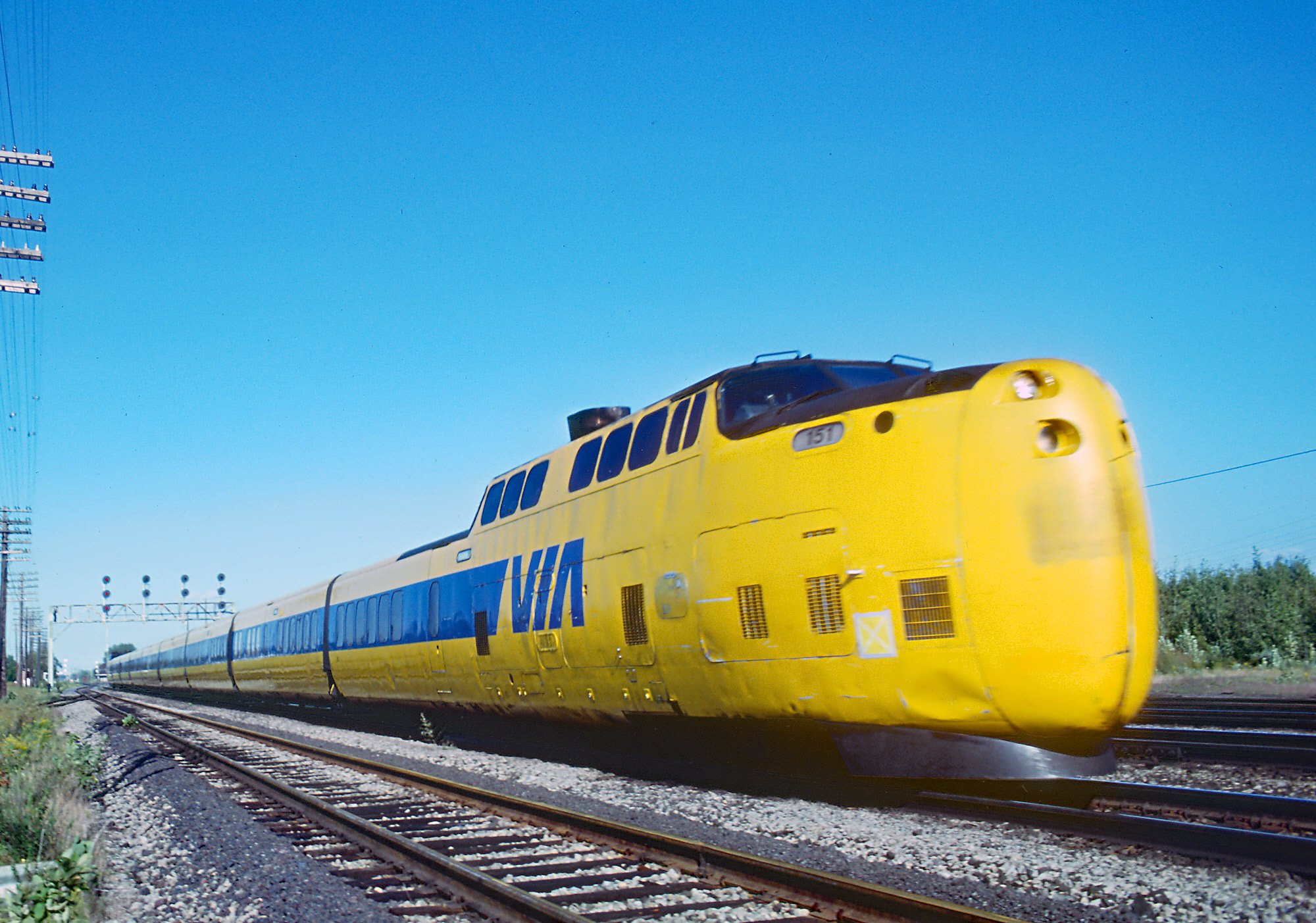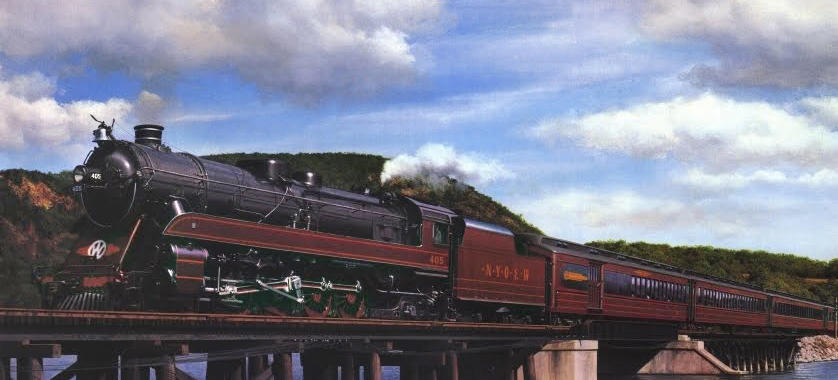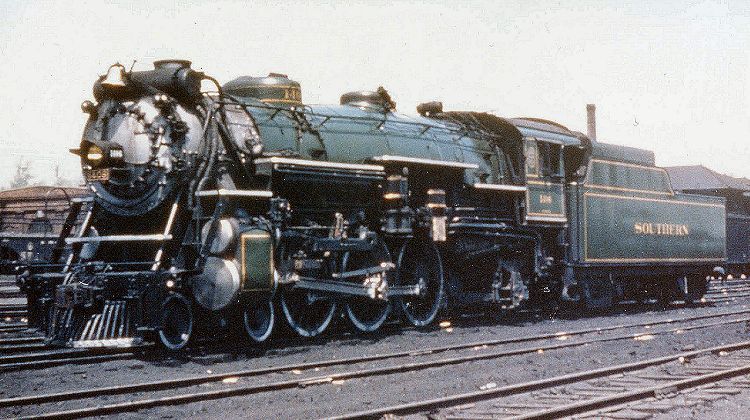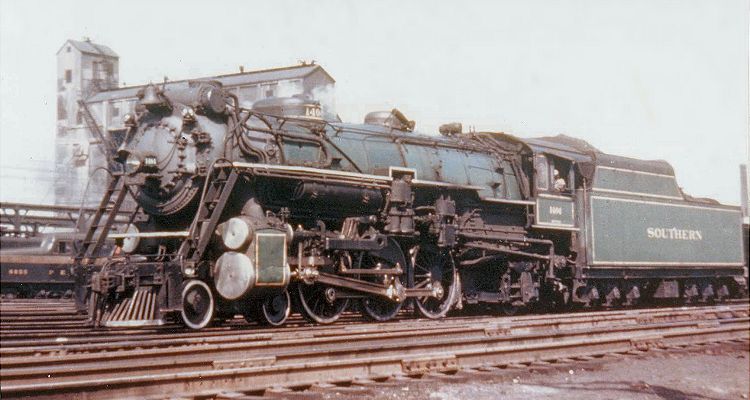In reply to 02Pilot :
The Genesis' replacement, the Siemens ALC-42 Charger, is a step in the wrong direction, I think. Cool name, but ugly.

In reply to 02Pilot :
The Genesis' replacement, the Siemens ALC-42 Charger, is a step in the wrong direction, I think. Cool name, but ugly.

I have to nitpick something about the new Amtrak Acela train sets that really bugs me. It seems obvious they're going for a very streamlined train, so why does the side profile of the cars jut out further then the locomotives?

In reply to Pete Gossett :
That is odd. At the very least it looks dumb. But it seems like it might cause buffeting at higher speeds.
In reply to NickD :
The real question is when and with what they replace the Amfleet passenger cars. Those things are ancient at this point.
NickD said:In reply to 02Pilot :
The Genesis' replacement, the Siemens ALC-42 Charger, is a step in the wrong direction, I think. Cool name, but ugly.
Believe it or not, the photo is kind of flattering. They're even uglier in person.
In reply to 02Pilot :
They are just now selling off their Heritage fleet. Some of those cars dated back to the New York Central days. Excursion railroads are trying to snap up as many of those cars as possible.
The UAC Turbo Train was a trainset with tilt capabilities and was articulated by sharing a truck between each car. It used a power car on each end with multiple Pratt & Whitney PT6 turbines in each power car. Depending on trainset length, one to five turbines provided propulsion power and one was a generator for lighting. On paper they were great, being incredibly fast and capable of 120+mph service. But they were always accused of riding poorly, the tilt mechanism was prone to trouble and the turbines suffered from oil leaks and fires

Strange, because the PT6 is one of the most widely used and reliable turboshaft engines in the world.
I suppose I should start a build thread since I've started a build. So far nothing really to show, just ordered a bunch of stuff and built an 8'x2' torsion box out of 1/4" plywood. I have a track plan, but no track yet. Will create a thread eventually once I figure out the relative sizes of my fingers and my layout.
ShawnG said:Strange, because the PT6 is one of the most widely used and reliable turboshaft engines in the world.
I wonder if a lot of it was the dirtier operating conditions. Also, the fact that it originally went into service on first New Haven and then became a Penn Central operation and then an early Amtrak operation, all three of whom were struggling to keep much of anything running
In reply to NickD :
I worked for AMTRAK from '76 to '82. They kept one of these under 30th street station in PHL while I was there. Some of us would check it out as part of our regular 'patrol' of the station. I never saw it run.
I seem to recall being told that there were 4 of them around the system but I never confirmed that nor did I know where the others were.
In reply to 68TR250 :
Seven total sets were built. New Haven bought two in '68, which Amtrak inherited in '71. CN would buy the other 5, and then in '71 sold 2 of them to Amtrak. In '73, one of the ex-CN sets sideswiped a freight train and was written off. By '76 Amtrak parked the remaining three, eventually moving them to Providence in hopes of selling them to CN/VIA, who were still running theirs. That never happened. Illinois Central looked at them as well, around 1979-1980 but passed on them due to their poor condition, at which point Amtrak cut them all up in 1980.
CN ran theirs into the '80s, but had 1 of their 3 catch fire and burn in '75 and then a second caught fire and burned in '82. They subsequently retired the third, replaced it with the slightly more conventional Bombardier LRC and cut up the last operational Turbotrain as well as the remains of the second one that had burned.
In reply to NickD :
Thanks for the info! I do recall being told that they were Canadian, kind of recall a fire but it is prettyhazy to me. That was a long time ago.
The original CN Turbo (they preferred to call them just Turbo in Canada, because they were trying to say it was so revolutionary that it wasn't a train) set actually hit a truck at a crossing on its maiden voyage. It remained upright and relatively undamaged and no one aboard the Turbo was hurt. But a lot of people say that this incident really scared Canada off from high speed rail and is why they have never pursued more modern rail service.

In reply to NickD :
It was called a "turbo" because, to Canadians, it's pretty obvious that it is a train.
Like how we say "hockey" and Americans say "ice hockey" or "tuna" vs "tuna fish". I've never gotten the tuna dog by mistake. ![]()
In reply to ShawnG :
Well, we say "Ice Hockey" because we have "Field Hockey" as well. It does remind me of when I lived in Tennessee and they all called a pen an "ink pen". I said to one of the guys I became friends with "Why do you call them ink pens, but not lead pencils?" His response was "Because there's no other kind of pencil" to which I fired back "There's no other kind of pen!"
But, seriously, "CN and their ad agency wanted to promote the new service as an entirely new form of transit, so they dropped the "train" from the name. In CN's marketing literature the train was referred to simply as the "Turbo", although it retained the full TurboTrain name in CN's own documentation and communication with UAC."
02Pilot said:The real question is when and with what they replace the Amfleet passenger cars. Those things are ancient at this point.
Holy E36 M3, I knew the Amfleets were old, but I thought maybe late '80s or early '90s. Nope, just learned the Amfleet I cars were built in the mid '70s and the Amfleet II cars are from 1980. The average mileage on an Amfleet car is 4.175 million.

They have just now submitted a Request For Proposals to replace the Amfleets and the Superliners. So, my guess is sometime around 2024/2025 we'll start seeing the AmCans getting replaced. Which enterprising tourist railroad will cash in on 1980s nostalgia by running Amfleet cars behind F40s?
New York, Ontario & Western #405 at the head of their premier train, The Mountaineer Limited. The ailing O&W put semi-streamlining on one of their early 4-8-2 Mountains, with a maroon with orange pinstriping scheme. Because they couldn't afford modern Pullman steel heavyweight cars, they continued using their old wooden cars, painted to match the engine. In an almost pitiful move, NYO&W proudly referred to their passenger operations as "The Great Timber Fleet", as a reference to the New York Central's "Great Steel Fleet". It almost seemed more like an insult that the NYC would have thrown at them.

A painting of the Mountaineer Limited. I believe there is only one known color photograph of the train in its steam era.

For hauling their premier varnish, Southern Railway had ALCo and Baldwin build them a fleet of 4-6-2 Pacifics, class Ps-4. They then painted the boiler jackets, cab and tender green with gold trim, as well as white running boards and wheels, and silver smokebox, cylinder caps and rods.



A single Ps-4, the #1401, was preserved. The #1401 is noteworthy for having pulled a portion of FDR's funeral train. When Southern was dieselizing in the early 1950s, outside legal counsel Graham Claytor convinced Southern's president to set the #1401 aside for preservation. The #1401 was restored and donated to the Smithsonian, where it is essentially entombed. Claytor would later become the president of Southern and when he started up a corporate steam excursion program in the mid-1960s, the #1401 was Claytor's first choice, as it was immediately distinguishable as a Southern locomotive, as well as being stored inside and in supposedly excellent mechanical condtion. But the Smithsonian rejected the lease offer, and Claytor was forced to turn elsewhere for Southern locomotives. As a consolation, he would painted Southern #4501, a 2-8-2 freight locomotive, in the gold and green passenger scheme.

You'll need to log in to post.